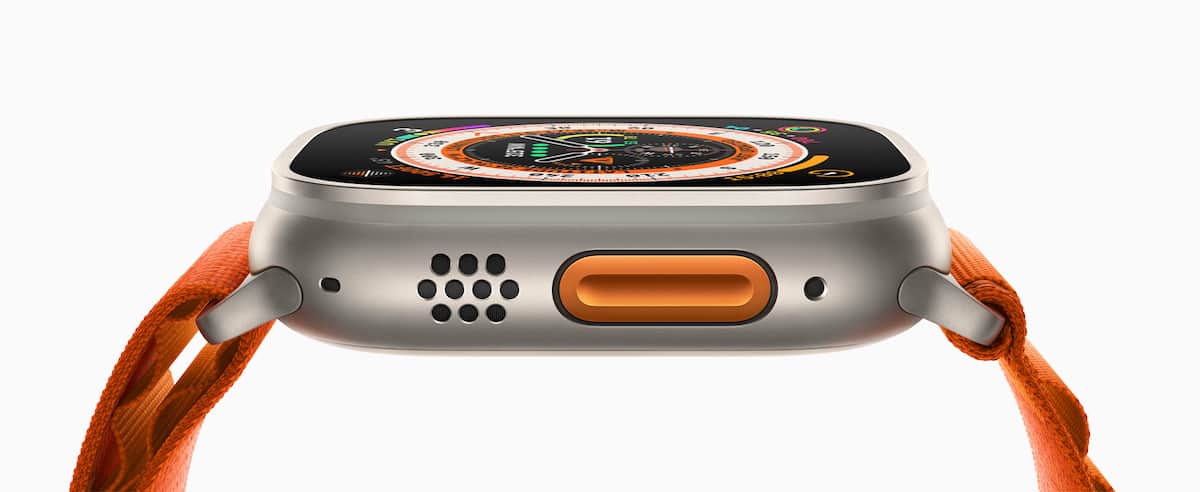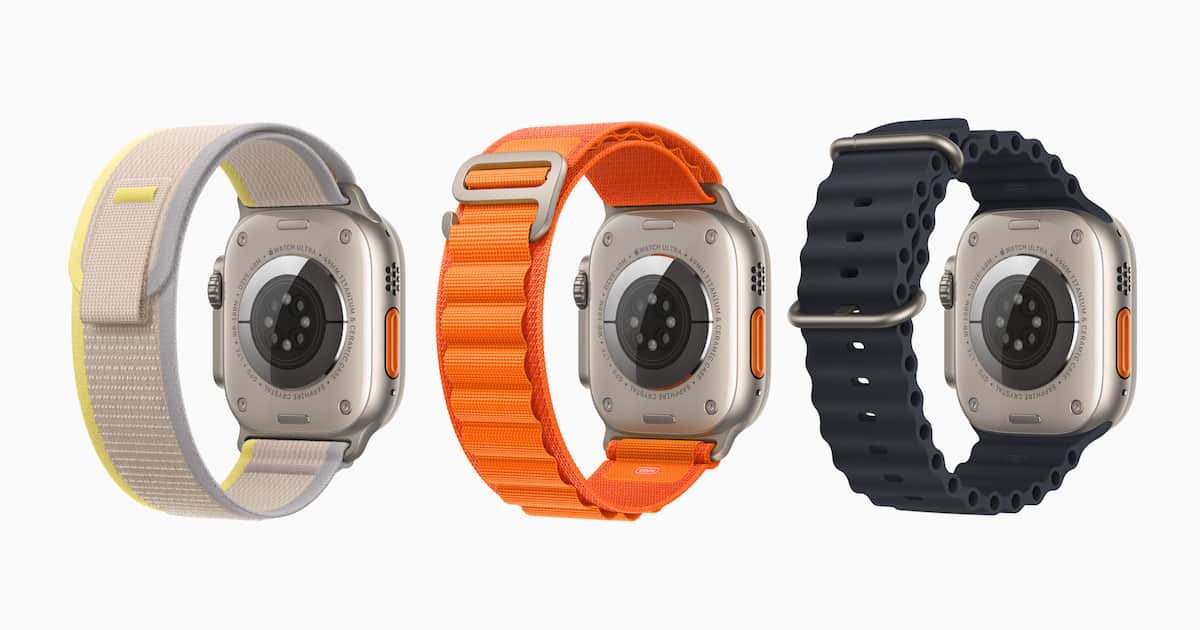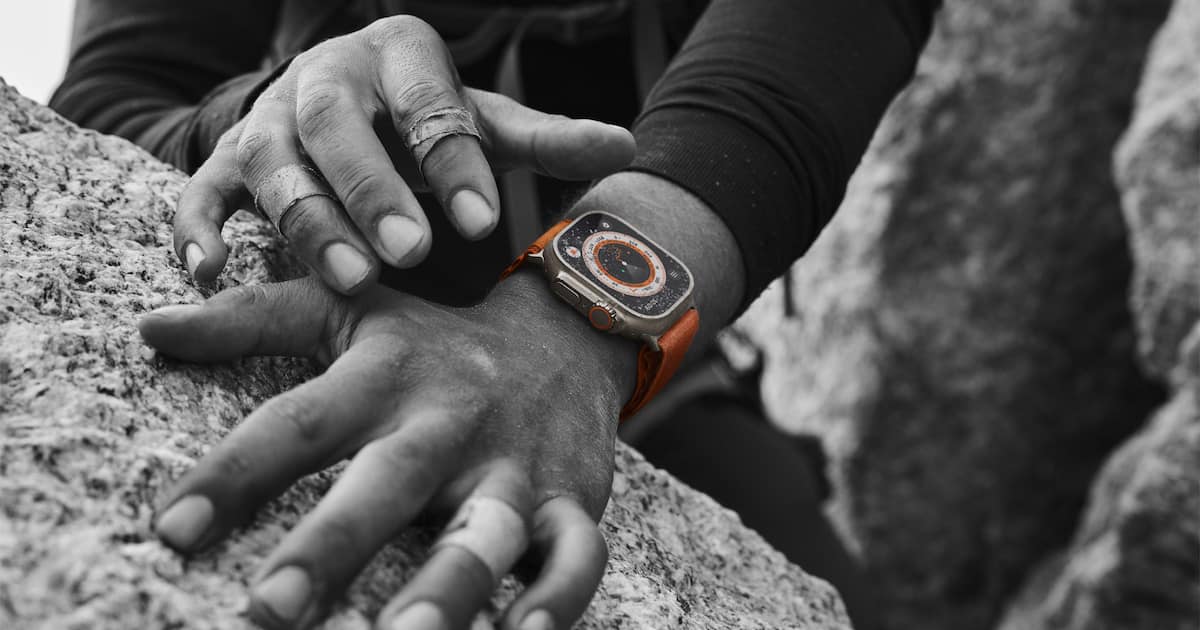In today’s “Far Out” event, Apple launched the new Apple Watch Ultra. The Apple Watch Ultra is a new smartwatch that marks Apple’s foray into the ruggedized activity/fitness tracker market.
Announcing the Apple Watch Ultra
Yes, we got the name wrong folks. It’s not the Apple Watch Pro, but rather the Apple Watch Ultra. Still, as we all expected, it’s Apple’s entry into the ruggedized sports watch market. Apple said that the latest product is a sports watch made for exploration, adventure, and endurance.
Featuring a 49mm titanium case and flat sapphire front crystal, the new wearable offers the biggest and brightest display. The Retina display maxes out at a brightness of up to 2,000 nits. That’s 2 times brighter than all Apple Watch models to date.

True to earlier rumors, there’s a new button on the left side of the watch. This customizable action button could be used to access a variety of features including Workouts, Compass Waypoints, Backtrack, and more.
Long Battery Life and Better Sound Quality
In terms of battery life, the more rugged smartwatch promises to provide up to 36 hours of power on a single charge. When extended with the new Low Power Mode, the battery can last up to 60 hours for multi-day use. This is perfect for athletes who use the Watch during long-distance running, such as a full marathon and even full triathlon events.
The wearable also offers improved sound quality with its three built-in microphones. The microphones use advanced wind and noise reduction when used in challenging environmental conditions. Hence, users can still make audio calls with better clarity.
Three New Bands Available for Various Activities
To go along with the new Apple Watch Ultra, there will be three new gorgeous-looking loop bands. These include the Trail Loop band, Alpine Loop band, and Ocean Loop band.

As mentioned, the Apple Watch Ultra is also geared for endurance sports and elite athletes. Apple said it integrated L1 and L5 GPS frequencies with new positioning algorithms. Hence it can provide users with precise distance, pace, and route data. Together with the new activity metrics that watchOS 9 provides, the Apple Watch Ultra would certainly be useful for athletes.
Best for Ocean and Water Enthusiasts and Explorers
Aside from athletes, Apple is also gearing the Apple Watch Ultra for ocean and water enthusiasts as well as explorers. It is certified to WR100 and EN 13319. These are the internationally recognized standards for dive accessories that include depth gauges relied upon by recreational divers around the world.
For explorers, the Apple Watch Ultra and the redesigned compass app in watchOS 9 will provide more in-depth information and three distinct views. The Digital Crown can display latitude, longitude, elevation, and incline. It could also show an orienteering view that shows Compass Waypoints and Backtrack.
New Features and More
Finally, the Apple Watch Ultra will come with the new features of watchOS 9. These include heart rate monitoring, ECG and Blood Oxygen apps, Activity rings, Mindfulness, and other health, safety, and navigation features. In addition, the wearable device offers the new Crash Detection and Cycle Tracking for women’s ovulation features. Both of these features are also available in Apple Watch Series 8 and the new Apple Watch SE.
Pricing and Availability
The Apple Watch Ultra retails for $799 and can be ordered starting today. It will be available in-store starting September 23. Every purchase of the wearable comes with three months of Apple Fitness+ subscription.

See today’s Joy of Tech comic
http://www.geekculture.com/joyoftech/joyarchives/2928.html
I would have bought one of these when I was younger and more active, mostly hiking and camping. These days a Watch Series 8 meets my needs,
@JBSlough Cheaper than expected indeed. Well, Apple has to consider the pricing of other smartwatches it’s aiming to compete with.
Well, it’s cheaper than I thought it be. I was expecting a grand. At least.